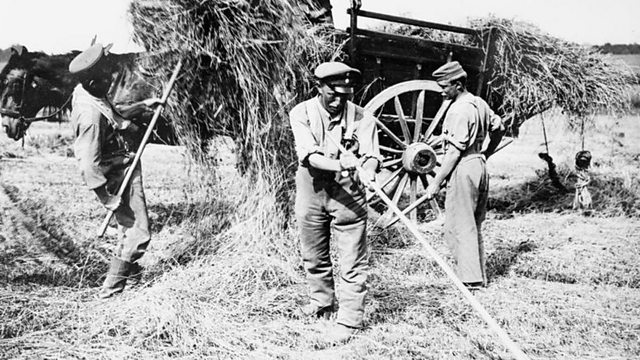Sandhill Park, Taunton: The Enemy Next Door
When Somerset villagers lived side by side with German POWs
The southern edge of the Quantock Hills is a gentle landscape of pasture land and picturesque villages. Taunton, the county town and Somerset’s administrative centre, is within arm’s reach but the farms, paddocks and cottages which are dotted across this green expanse give no clue to the relative bustle of their neighbour. In the last few decades there’s been a noticeable increase in house building here and the roads are certainly busier.
But even now, a century on from World War One, it’s hard to believe that the realities of the conflict could ever have been brought to the doorsteps of the householders in the area.
In fact for the villagers of Combe Florey and Bishops Lydeard, the enemy could not have been closer. During the war Somerset became a temporary home to German prisoners of war (POWs) and various locations across the county were used as camps for captured enemy servicemen. Schools, workhouses and, most notably, a country estate at the foot of the Quantocks called Sandhill Park.
Built in 1720 by John Periam, the MP for Minehead, it was originally called Hill House. From 1767 until 1913 it was the home of one of the great titled families of Somerset, the Lethbridges.
By virtue of its size and the surrounding parkland, Sandhill became one of the county’s largest POW camps when the first German and Austrian officers arrived from the Western Front at the end of 1916. The Somerset Heritage Centre at Norton Fitzwarren houses not only local newspaper reports from the time but also the minutes of the county’s War Agricultural Committee (an organisation with the task of increasing food production). Together they paint a fascinating picture of how local people reacted to their foreign neighbours.
One of the earliest references to the camp was in the ‘Taunton Courier’ in the New Year of 1917, which described how villagers in Combe Florey had a shock on 25 December: “Considerable excitement was noticed when it was reported that German prisoners had come to Sandhill Park and still more excitement on Christmas Day when they marched under armed guard through the village.”
For some of the residents it must have been an unnerving experience to see the enemy marching past their windows while their loved-ones were fighting overseas. Over the next year or so, prisoners being escorted on route marches became a familiar sight in the area. The POWs also came into contact with local people while working on the farms and in 1918 one man accused the prisoners of pushing him off a path while they were exercising.
Sam Astill from the Somerset Remembers Project says a certain degree of familiarity grew up: “People quite quickly adapted to having the Germans around but that doesn’t mean that they were necessarily happy that they were here. Time and time again the newspaper archives reflect near paranoia among Somerset people that the inmates were being treated favourably by the authorities and even that they were better fed than the general public.”
There’s some evidence to suggest that the house and the surrounding 19 acres of land were put up for auction in February 1917. What we can be certain about is that Sandhill’s spell as a POW camp came to an end the following April. Seven months before the signing of the armistice, the German captives were transferred to other camps. Ten decades on there are some tantalising questions which remain unanswered; when peace came did any of the prisoners of war decide to stay? Do they have descendants living in the county today? How many former camp-mates revisited Somerset in later life?
In 1919 the house was bought by Somerset County Council as a home for disabled children although during World War One it was requisitioned for use as an American army hospital.
The recent history of the house has been tragic. After standing empty and becoming a magnet for vandals, an application was made to convert Sandhill Park into apartments. But in November 2011 arsonists struck and the building was badly damaged with the main roof totally destroyed and valuable 18th Century ornamental ceilings ruined. The flames were so intense that it took six fire crews 12-hours to put them out. It was a sad end to a long, diverse and compelling history.
Location: Sandhill Park, near Bishops Lydeard, Taunton, Somerset TA4 3QU
Image: POWs working the land were a common sight on camps in rural England. Photograph courtesy of Imperial War Museums.
Duration:
This clip is from
Featured in...
![]()
����ý Somerset—World War One At Home
Places in Somerset that tell a story of World War One
More clips from World War One At Home
-
![]()
The loss of HMY Iolaire
Duration: 18:52
-
![]()
Scotland, Slamannan and the Argylls
Duration: 07:55
-
![]()
Scotland Museum of Edinburgh mourning dress
Duration: 06:17
-
![]()
Scotland Montrose 'GI Brides'
Duration: 06:41







